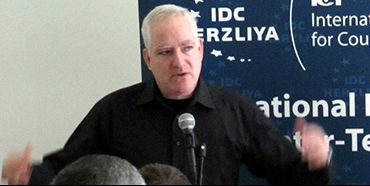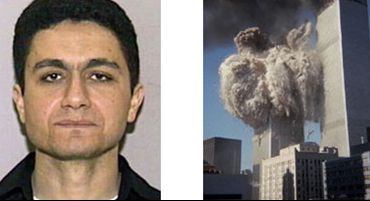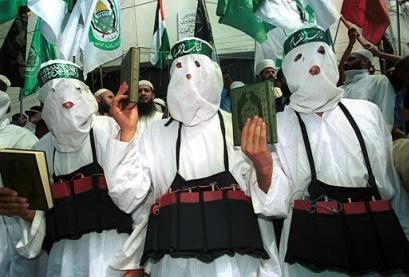The main purpose of terrorists is to spread anxiety and fear among the civilian population; the methods used are manifold, the important thing is that their actions achieve results both at political and propaganda level. The more the actions are striking and the greater the message of fear that the organizations spread all over the world.
The doctrine speaks of terrorism as a war conducted by a group of people who pursue a political purpose, but who do not have the possibility to confront their adversary by conventional methods. Terrorists certainly do not have the military capabilities of a sovereign state, yet they can cause deeper and more dangerous damage than a regular army. Suicide attacks are the deadliest weapon available to terrorist organizations and the most difficult challenge for counter-terrorism.
For the traditional Islamic religion, suicide is a very serious sin, the Koran forbids a Muslim to take his own life, however Islamists justify the extreme gesture with the term "martyrdom", thus seeking to legitimize it in the religious community (Istishhad sacrifice in the name of Allah). The historical roots of martyrdom for Allah are scarce, there is no official tradition in this sense, however Michael Taarnby, in his Profiling Islamic Suicide Terrorism, tries to identify two episodes to which Islamists refer: the sacrifice of Ussein ibn'Ali in Battle of Karbala in 800 BC and the practices of the famous Assassin sect active between the 11th and 13th centuries. If this theory has raised some doubts in various scholars, what everyone agrees on is that suicidal terrorism, as we understand it today, has more recent roots, traceable among the Iranian Shiites. The Islamic revolution of 1979 and the birth of Hezbollah marked, in fact, an important step in the history of terrorism. Let's think for a moment about the fanatical waves of the Basij-e Mustazafin (Mobilization of the Oppressed) in the war against Iraq: men, old and young, who hurled themselves against the enemy aware of their death. For Iranians, the ideological fervor of Khomeni's words was instrumental in pushing them towards extreme acts.
 The first suicide bombing of contemporary terrorism dates back to 18 1983 April when the US embassy in Beirut was demolished by 910 kg of explosives causing 63 deaths.
The first suicide bombing of contemporary terrorism dates back to 18 1983 April when the US embassy in Beirut was demolished by 910 kg of explosives causing 63 deaths.
The war in Lebanon and the arrival of the multinational peace force marked a new escalation of suicide attacks: the killing of 241 marines and 56 French soldiers marked the end of the American commitment in that region, effectively decreeing the victory of Hezbollah .
Until the eighties no Islamist group could boast the same number of suicide attacks by the Iranians; things began to change in the 1990s with Hamas and al-Qaeda which quickly raised the average in their favor.
Definition
What is a suicide attack?
Boaz Ganor (photo below), Executive Director of the International Institute for Counter Terrorism of Herzliya in Israel, gave the most correct definition: the suicide attack is an operational method in which the true action of attack depends on the death of the perpetrator . This is the only situation in which the terrorist is sure that if he does not kill himself, the operation will fail and the plan will not be concluded.
Features, motivations and benefits
Among the various common places on suicide attacks, the most widespread is that the attackers are crazy, asocial and fanatical. Nothing could be more false.

In agreement with the words of Boaz Ganor, whoever commits a suicide attack, far from being unreasonable, is the author of a rational act and never the result of personal initiative.
Robert A. Pape, one of the leading terrorist scholars of the University of Chicago, agrees with the doctrine of ICT explaining how the attacks follow a strategic logic that has a beginning and an end, determined by the results achieved.
On why organizations increasingly adopt this type of aggression, the unanimous answer is simple: because it works.
Ganor himself calls suicide bombers the "smart bombs" in the hands of organizations: a bomber with his load of death can decide where and when to blow himself up, can change the target at the last moment and in any way try to stop it will cause irreparable damage. The terrorist organizations then count on the spasmodic attention of the mass media, which dramatically amplify the gravity of what happened, thus acting as a megaphone to their message.
But what drives a man to become a shahid? But above all, who are the martyrs of the jihadist cause?
Regarding the first question, we specify that there are common reasons, while others derive from the particular situation in which the future martyrs of Allah grow. Obviously, Islamist terrorism is driven by a strong religious urge resulting from a distorted interpretation of the word Jihad. Abdul Hadi Palazzi, director of the Cultural Institute of the Italian Islamic Community, recalls how the Islamic religion has been kidnapped and bent by the Wahhbites to endorse their barbarism.
Tracing a profile that unites suicide terrorists is problematic; as Michael Taarnby pointed out, what was true for the past is no longer valid today and it would be imprudent to create categories. In the common vision, typically Western, we imagine the "martyrs" as deeply religious, isolated, socially marginalized or desperate and in this description everything is true, but also nothing.
 Muhammad Atta, leader of the 11 terrorists in September, was not a penniless man: he had grown up in Germany, lived a comfortable life, had a medium-high culture and drank alcohol, yet his gesture was guided by a profound religious awareness. The evening before crashing into one of the Twin Towers, the event was solemnized by writing to the brother of the horrias (the virgin 72 of the Islamic paradise) and of the imminent expiation of his sins thanks to death.
Muhammad Atta, leader of the 11 terrorists in September, was not a penniless man: he had grown up in Germany, lived a comfortable life, had a medium-high culture and drank alcohol, yet his gesture was guided by a profound religious awareness. The evening before crashing into one of the Twin Towers, the event was solemnized by writing to the brother of the horrias (the virgin 72 of the Islamic paradise) and of the imminent expiation of his sins thanks to death.
The case of Muhammad Atta is not different from that of other attackers who have similar stories: birth and Western formative process, acceptable living conditions, medium-high culture, but above all a sudden and irrepressible search for themselves and their own origins. They are what analysts call "reborn Arabs", ie people born and lived in Europe or America, with a Western lifestyle in which they have not been able to identify themselves.
This disorientation causes several questions such as: "But who am I really?" Islam's propaganda action is based on this precariousness and desire for answers. These are the people who swell the ranks of al-Qaeda which provides them with a new moral identity and ideological feedback to their existential doubts. From this moment on, a sort of voluntary isolation and / or marginalization from the rest of society begins, dictated above all by the needs of the organization. Among the dynamics that push a person to become a martyr, the logic of the group plays a substantial role, not the individual characteristics. Scott Aran, anthropologist and author of The Moral Logic and Growth of Suicide Terrorism, identifies the "cell" as the main embryo within which the will to commit suicide for the cause matures.
Otherwise, this succession of events does not involve Afghan Arabs who, conversely, are the group least likely to blow themselves up for jihad. It is statistically proven that trained mujaheddin with direct experience on the battlefield, repudiate suicide as a method of struggle, thus representing the lowest percentage among the bombers.
 Of a different style are the attacks of Palestinian origin where the individual is dominated by a sense of frustration and irresolution that favors a self-destructive attitude. According to Khalil Shikaki, of the Center for Palestine Research and Studies of Nablus, the Palestinians are crushed between the oppressive presence of the Israeli army and the violence of Hamas. Indeed, the continuing friction between these two poles creates an intolerable situation, erasing all hope for a different future. In addition we must consider a peculiar feature among the Palestinians, patriotism; their suicidal actions are, in fact, supported by a strong sense of honor (present throughout the Muslim society), but above all by love for their land. A profound religiosity, albeit distorted, unites all the attackers, who however have characteristics that vary according to the place in which they were born and raised, by the family, the experiences and friendships.
Of a different style are the attacks of Palestinian origin where the individual is dominated by a sense of frustration and irresolution that favors a self-destructive attitude. According to Khalil Shikaki, of the Center for Palestine Research and Studies of Nablus, the Palestinians are crushed between the oppressive presence of the Israeli army and the violence of Hamas. Indeed, the continuing friction between these two poles creates an intolerable situation, erasing all hope for a different future. In addition we must consider a peculiar feature among the Palestinians, patriotism; their suicidal actions are, in fact, supported by a strong sense of honor (present throughout the Muslim society), but above all by love for their land. A profound religiosity, albeit distorted, unites all the attackers, who however have characteristics that vary according to the place in which they were born and raised, by the family, the experiences and friendships.
The one who offers his life for the Prophet, enjoys paradise favors, but also lands: the former are traceable between the lines of the Koran, while the latter are closely connected to terrorist organizations. In all cases the bomber is seen as a hero, especially for his family because it is the latter who will benefit most from his martyrdom. The family of a shahid immediately acquires the favors of the organization, tangible in the form of money and social prestige. So those who take their own lives do not just make a political and religious gesture, but also altruistic with respect to their relatives. The chosen ones also have the opportunity to leave a will that corroborates their gesture; often the martyrs record videos in which they recount the sacrifice for Allah making themselves portrayed next to the place where they will explode.
Suicide terrorists are therefore deadly weapons and the real challenge of anti-terrorism is to prevent or thwart these gestures, far from crazy.
Technology and targeted training of security personnel certainly helps to cope with the situation, but when this kind of threat is fought, a good number of victims must always be counted.
Conclusions
The data resulting from accurate research such as that of Michael Taarnby become one of the crucial issues for trying to understand the phenomenon of suicide terrorism; the cases analyzed explain how the motive is always the same, despite the personal stories are profoundly different. Even more alarming is the news, confirmed by the ICT studies, which points to Europe as the main recruitment center for future bombers and the events that have recently happened in Paris prove this. The Islamic communities of Paris, London or Berlin are potential terrorist factories; the conditions in which certain young people live, those who have not known or been able to exploit the great "Western" occasion, is one of the keys to understanding not only suicidal terrorism, but jihadism in a wider sense.
Marginalization, integration, racism are all words that are comfortable in the living rooms of the European Community, but that take on a different meaning among the population of cities increasingly oppressed by a ruthless economic dynamism. The search for one's own origins through religion is not a condemnable fact, yet it seems very strange how the message of Islamists sounds stronger than that of traditional Islam.
To conclude, Palazzi's statement on the abduction of his religion is fitting, but does not answer the question of how good Islam, that of the majority, can free itself from its "dark side".












